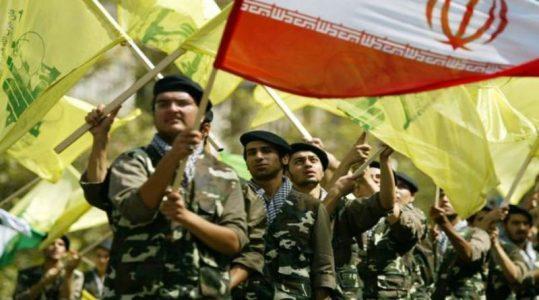
The real terror threat of Iran and Hezbollah in Europe
In the course of almost 40 years, Iran is the world’s leading state sponsor of terrorism and has a long and bloody history of terror attacks.
Since 2017 the Iranian regime’s terrorist activities appear to be on the rise on European soil. Thanks to good intelligence the Iranian latest terrorist plots has not resulted in heavy casualties, but these plots are just the tip of the iceberg.
The latest Iranian terror plots in Europe are a warning and a wake-up call to governments in Europe to re-examine the appeasement polices towards the Iranian regime.
To carry out such terror operations, Iran uses a wide network of the IRGC’s: al-Qods Force, the Ministry of Intelligence (MOIS) and proxies like Hezbollah. Iran has an organized terrorist network established in Europe and the people who were arrested in connection with the terror plots lived and worked in Germany, Austria, Belgium, France, Norway and Denmark.
Despite the many terrorist attacks carried out by Hezbollah around the world and on European soil, so far most of the European Union countries have not put Hezbollah on its list of terrorist organizations.
Iran’s effort to exert influence over the Western Balkan and its governments poses a grave security threat. Iran is using “Soft Power” to maintain and even extend its influence in the Balkans, through economic, cultural and religious ties. Iran is supporting centers for religion studies and NGOs in the Balkans to promote the Iranian radical religious doctrine. The European countries must be aware to the potential threat from Shia jihadists and the radicalization of European Muslim youths, by the Shia revolutionary doctrine.
Iran and Hezbollah are the main potential threats to the interests of the United State, Israel and the European Union. This is something not yet realized by Western governments. The European Union and its member states must understand the need to prevent the Iranian threat to their security and interests and take the necessary tough measures against the Iranian regime and Hezbollah.
As the tension between Iran and the United States, and its allies in Middle East, are on the rise and the sensitive domestic situation in Iran, the foiled attacks in Europe mark an escalation in Iran’s willingness to undertake violent covert operations, after years of relative restraint.
The Iranian regime appears committed to a strategy of targeting Iranian dissidents, and Western and Israeli interests, not only in places where countermeasures may be comparatively underdeveloped but even in Europe.
As it appears from the various Iranian and Hezbollah terrorist plots on European soil since 2012, their apparatuses use a wide range of militants of Iranian, Lebanese origin or others, as well as asylum seekers, for intelligence missions or as terrorist infrastructure.
There are hundreds of Iranian al-Qods Force, MOIS and Hezbollah members within E.U. borders, many of whom could be activated should Iran or Hezbollah decide to operate against E.U., U.S. or Israeli targets on European soil.
U.S. President Donald Trump, former U.S president Barack Obama and former Secretary of State Hillary Clinton have urged the E.U. to proscribe all of Hezbollah as a terrorist organization. Making distinction between Hezbollah’s military, political and social activities is a fiction, and the E.U. must change its mind and include Hezbollah in its list of terrorist organizations.
Source: JNS





